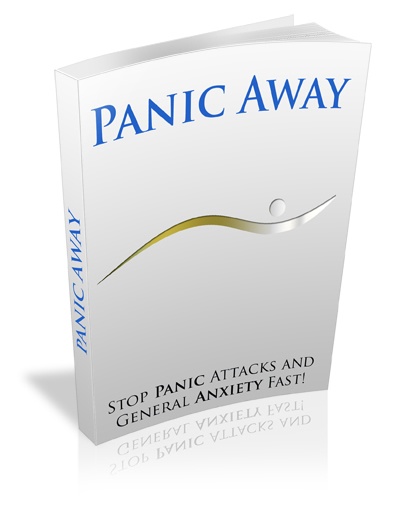As a person who has struggled with anxiety for most of my life, I understand the overwhelming feeling of constant worry and unease. The racing thoughts, the tightness in my chest, the physical and mental exhaustion – it's a never-ending cycle that leaves me feeling drained and helpless.
But then, I discovered the incredible power of mindfulness meditation for immediate anxiety relief. It was like a beacon of light amidst the darkness, offering me a way to calm my mind, soothe my nerves, and find peace in the present moment.
Our Top Pick For Beating Panic Attacks

Stopping, and preventing, panic attacks is now even easier.
Mindfulness meditation is not some magical cure-all, but it is a gentle and effective practice that has helped me manage my anxious thoughts and find some much-needed relief. Through simple mindfulness exercises, such as deep breathing techniques, stress reduction practices, and relaxation exercises, I have learned to cultivate a sense of awareness and presence that allows me to navigate my anxiety with greater ease.
So, if you're like me and searching for ways to alleviate anxiety, I invite you to join me on this journey of mindfulness meditation. Together, we can discover the power of the present moment and find immediate relief from anxiety.
Key Takeaways:
- Mindfulness meditation offers immediate anxiety relief through simple exercises and practices.
- Deep breathing techniques, relaxation exercises, and stress reduction strategies are key components of mindfulness practice.
- Mindfulness meditation helps cultivate awareness and presence, allowing us to navigate anxiety with greater ease.
- By embracing the power of the present moment, we can find peace and relief from anxiety.
- Join me on this journey of mindfulness meditation and discover the transformative effects it can have on your mental health.
Focus on the rising and falling of your breath
One effective way to reduce anxiety and bring yourself into the present moment is by focusing on the sensation of your breath. By paying attention to the natural rise and fall of your breath, you can anchor yourself in the present and alleviate anxiety. This practice, known as breath focus, is a fundamental aspect of mindfulness meditation.
Here's how you can incorporate breath focus into your mindfulness practice:
- Find a comfortable position: Sit or lie down in a position that allows you to relax and focus without any discomfort.
- Close your eyes: Close your eyes gently to minimize distractions and direct your attention inward.
- Take a deep breath in: Inhale deeply, feeling the sensation of the air entering your body.
- Notice the breath: Pay attention to the movement of your breath as it fills your lungs and then slowly exhale.
- Count your breaths: If you find it helpful, count your breaths from one to ten, focusing on each inhalation and exhalation.
- Observe the body: Notice how your body moves with each breath, feeling the rise and fall of your chest or the expansion and contraction of your abdomen.
- Repeat as necessary: Practice this breath focus exercise for about 10 seconds or as long as you need to help reduce anxiety and bring yourself into the present moment.
By consistently practicing breath focus, you can train your mind to let go of anxious thoughts and stay grounded in the present. Remember, mindfulness meditation is a skill that develops over time, so be patient and gentle with yourself as you continue to cultivate awareness and experience the benefits of being fully present.
Pay attention to how your feet feel on the floor
Incorporating grounding techniques into your mindfulness meditation practice can greatly assist in anxiety relief. One effective method is to pay close attention to how your feet feel on the floor or how your hands feel on a surface. This technique helps anchor your focus to the present moment, allowing you to let go of anxious thoughts and worries. As you engage with the sensation of your feet firmly rooted to the ground, you create a sense of stability and connection with the present moment.

Allow your mind to naturally wander, accepting any thoughts and emotions that may arise. The key is to simply observe them without judgment and gently redirect your attention back to the grounding sensation. By repeatedly bringing your focus back to the present moment, you can quiet the mind and alleviate anxiety.
“When I feel overwhelmed by anxiety, I find solace in grounding myself through my feet. With each step I take, I consciously notice the sensation of the ground beneath me. This simple practice helps me to let go of worry and find stability in the present moment.”
If you find your thoughts wandering away from the present moment, gently guide them back to the sensation of your feet. Over time, this grounding technique can become an effective tool for managing anxiety and promoting a sense of calm.
Additional Tips for Grounding Techniques:
- Experiment with different surfaces, such as grass, sand, or carpet, to enhance the grounding sensation.
- Combine this technique with deep breathing exercises to deepen the relaxation response.
- Practice grounding in various environments, such as your home, office, or outdoor settings, to adapt to different situations.
| Benefits of Grounding Techniques | Benefits of Grounding Techniques |
|---|---|
| Reduces anxiety | Promotes relaxation |
| Improves focus and clarity | Enhances emotional resilience |
| Helps regulate emotions | Supports overall well-being |
Do a full-body scan, starting at the top of your head
One powerful mindfulness meditation technique for anxiety relief is the full-body scan. To practice this, find a quiet and comfortable space, close your eyes, and take a moment to center yourself. Start by directing your attention to the top of your head, and slowly move down, scanning your body from head to toe. Notice any sensations, tensions, or areas of discomfort without judgment or the need to change anything.
As you continue the scan, pay attention to each part of your body, including your face, neck, shoulders, chest, belly, arms, hands, hips, legs, and feet. Observe any physical sensations, such as warmth, tightness, tingling, or relaxation. Take your time and be fully present in each moment.
Repeat this scan two to three times, allowing yourself to dive deeper into your body's sensations and bringing your awareness to the present moment. After completing the full-body scan, take a moment to reflect on how you feel before and after the practice.
By engaging in this practice regularly, you can become more aware of your body and its signals, promoting a greater sense of body awareness and reducing anxiety.
Benefits of the full-body scan:
- Enhances body awareness and mindfulness
- Brings you into the present moment
- Allows you to observe physical sensations without judgment
- Helps reduce anxiety and promote relaxation
To deepen your understanding of the full-body scan technique, here's a detailed table showcasing the benefits and advantages:
| Benefits | Advantages |
|---|---|
| Enhances body awareness | Improves ability to recognize and respond to physical sensations |
| Brings you into the present moment | Helps shift focus away from anxiety-inducing thoughts |
| Allows you to observe physical sensations without judgment | Promotes a compassionate and non-reactive mindset |
| Helps reduce anxiety and promote relaxation | Calms the nervous system and cultivates a sense of peace |
Remember, the full-body scan is a valuable tool in your mindfulness meditation practice for anxiety relief. It can help you cultivate a deeper connection with your body, enhance your present moment awareness, and bring about a sense of calm and relaxation.
Imagine bright, warm sunlight shining down above your head
Visualization is a powerful technique in mindfulness meditation that can help alleviate anxiety and promote relaxation. One effective visualization exercise is to imagine bright, warm sunlight shining down above your head and filling up your entire body.
Close your eyes and take a deep breath, allowing the image of radiant sunlight to come into focus. Visualize its warmth and brilliance enveloping your head, melting away any tension or worries you may be carrying.
As you continue to breathe deeply, imagine the sunlight slowly spreading throughout your body, flowing down your neck, shoulders, arms, torso, hips, legs, and feet. Feel its soothing energy relaxing every muscle, releasing any tightness or discomfort.
Allow yourself to bask in the warmth and spaciousness created by this visualization. Feel a sense of calmness washing over you as the sunlight penetrates every cell, bringing a deep sense of relaxation and peace.
This visualization exercise can be practiced anytime you feel the need for anxiety relief or relaxation. Give yourself a few moments each day to imagine the bright sunlight and experience its transformative power.
Remember, mindfulness meditation is a journey, and each visualization exercise is a tool to help you cultivate a greater sense of well-being and inner calm.

Let your mind think about whatever it wants to think about
One of the fascinating aspects of mindfulness meditation is the power of thought observation. In this practice, you allow your mind to wander wherever it wants to go, without any expectations or focused attention. This might seem counterintuitive at first, but it can be an effective way to reduce anxiety and create a sense of mental clarity.
During your mindfulness session, give yourself the permission to let go and roam freely in the realm of your thoughts. Let your mind explore various ideas, memories, and images without judgment or analysis. This is a time for pure observation, allowing your thoughts to arise and pass through your mind like clouds in the sky.
By creating this mental space, you are giving yourself the opportunity to release any pent-up energy or tension that might be contributing to your anxiety. It allows you to acknowledge and observe your thoughts from a distance, without getting tangled in them.
Thought Observation in Action:
If you have been experiencing anxious thoughts, take a few moments to close your eyes and take a deep breath. As you exhale, release any expectations or limitations you might have regarding your thoughts. Open yourself up to the vastness of your mind and let the thoughts flow freely.
As your thoughts come and go, notice the different colors, shapes, and textures they take on. Observe how they appear and disappear, without trying to hold on to or push away any particular thought. Simply be present with your thoughts, embracing the ebb and flow of your mental landscape.
Remember, this practice is not about analyzing or engaging with your thoughts; it's about being an impartial observer. Allow yourself to detach from the content of your thoughts and focus on the process of observation itself.
Through thought observation, you can cultivate a sense of mental space that allows for clarity, insight, and a greater understanding of your own mind. Harnessing this power of observation can lead to a heightened sense of self-awareness and a reduction in anxiety.
During your mindfulness practice, give yourself the freedom to let your mind wander and explore. Embrace the vastness of your thoughts and cherish the mental space that arises from this practice of thought observation.
| Benefits of Thought Observation |
|---|
| Reduces anxiety by creating mental space |
| Fosters a sense of clarity and insight |
| Enhances self-awareness and introspection |
| Helps develop a nonjudgmental attitude towards thoughts |
| Promotes relaxation and peace of mind |
Picture someone you love and breathe in their anxieties
When it comes to finding relief from anxiety, mindfulness meditation can offer a powerful tool for cultivating compassion and emotional connection. One technique that can be particularly effective is to picture someone you love in your mind and imagine breathing in their anxieties and insecurities with each inhale. This practice not only helps shift the focus away from your own anxiety but also allows you to foster a deeper connection with your loved one.
As you hold their image in your mind, take slow and deep breaths, consciously inhaling their worries and fears. Feel their anxieties entering your body, acknowledging their presence without judgment. On the exhale, turn your attention to the positive qualities and shared experiences you have with this person. Focus on the love, support, and strength that they bring into your life.
This practice of “skillful compassion” not only helps you empathize with your loved one's struggles but also promotes a sense of interconnectedness and emotional well-being within yourself. By acknowledging and understanding the anxieties of others, you create space for compassion and strengthen your ability to navigate your own anxiety.
Remember, mindfulness meditation is a practice, and it may take time to fully embrace this technique. Be patient with yourself and allow yourself to fully immerse in the experience. With regular practice, you can harness the power of mindfulness to cultivate compassion, find anxiety relief, and deepen emotional connections.

| Benefits of picturing someone you love and breathing in their anxieties |
|---|
| 1. Enhanced empathy and compassion |
| 2. Shifted focus away from personal anxiety |
| 3. Strengthened emotional connection with loved ones |
| 4. Deepened sense of interconnectedness |
Talk to yourself like you'd talk to a friend
When it comes to managing anxiety, positive self-talk can be incredibly powerful. The way we speak to ourselves has a direct impact on our thoughts, emotions, and overall well-being. By adopting a compassionate and supportive inner dialogue, we can cultivate a sense of calm and shift away from overwhelming emotions.
Take a moment to ask yourself: “What do I appreciate most in my life?” Reflect on the things that bring you joy, love, and fulfillment. It could be the support of your loved ones, the beauty of nature, or the achievements you've accomplished.
Dwell in that gratitude for just 30 seconds. Allow yourself to truly feel the appreciation and let it fill your heart. Practice this exercise regularly as part of your mindfulness meditation routine.
“The practice of positive self-talk can help foster self-compassion and build resilience in the face of anxiety. By shifting our focus to what we are grateful for, we can reframe our perspective and reduce the power of anxious thoughts.”
During moments of stress or anxiety, remind yourself of the things you appreciate most. Speak to yourself with kindness and understanding, just as you would to a dear friend in need. By nourishing yourself with positive self-talk and gratitude, you can create a safe inner space that supports your well-being and promotes anxiety relief.

Understanding Mindfulness and Its Benefits for Anxiety Relief
Mindfulness is a powerful practice that can have significant benefits for managing anxiety and improving overall mental health. By cultivating awareness and non-judgmental acceptance of our thoughts and emotions, mindfulness meditation offers an effective approach to mitigating stress, anxiety, and depression.
Regular practice of mindfulness meditation can lead to long-term changes in how we respond to challenging situations, allowing us to develop a greater sense of calm and well-being. It teaches us to observe our thoughts and emotions without getting caught up in them, providing a valuable tool for managing anxiety.
Mindfulness can have several mental health benefits, including:
- Stress reduction: By focusing on the present moment and letting go of worries about the past or future, mindfulness helps to reduce stress levels and promote a sense of relaxation.
- Anxiety management: Mindfulness meditation enables us to observe and acknowledge anxious thoughts without judgment, creating distance from them and reducing their impact on our well-being.
- Improved emotional regulation: By cultivating a non-reactive and compassionate stance towards our emotions, mindfulness practice enhances our ability to regulate and navigate difficult emotions effectively.
- Increased self-awareness: Mindfulness allows us to develop a deeper understanding of our thoughts, emotions, and triggers, enabling us to make conscious choices and respond more skillfully in challenging situations.
- Enhanced focus and attention: Regular mindfulness practice strengthens our ability to sustain attention and stay present, leading to improved concentration and productivity.
Practicing mindfulness can help us find a greater sense of peace and balance in our lives, even amidst the inevitable ups and downs. By staying present and connected to our experience, we can cultivate a deep sense of well-being and navigate anxiety with greater resilience and ease.
Incorporating mindfulness into our daily routine through meditation exercises and mindfulness-based activities can significantly contribute to our mental well-being. The key lies in consistent practice and a gentle, non-judgmental attitude towards ourselves as we embark on this transformative journey.

References:
| Source | Description |
|---|---|
| American Psychological Association | Information on the benefits of mindfulness for mental health. |
| National Institute of Mental Health | Research-backed insights into the effectiveness of mindfulness for anxiety management. |
| Harvard Health Publishing | Expert articles and studies exploring the impact of mindfulness on stress reduction and well-being. |
Benefits of Mindfulness for Anxiety Relief
Research and studies have extensively explored the benefits of mindfulness meditation for anxiety relief and overall mental health. Incorporating mindfulness into your daily routine can lead to significant improvements in managing stress, anxiety, and depression. Here are some key mental health benefits of mindfulness:
Reduced Stress Levels
Mindfulness meditation helps individuals develop a greater sense of awareness and acceptance of their thoughts and emotions. By being fully present in the moment, individuals can reduce stress levels, as they learn to observe and acknowledge their worries without judgment or overreaction.
Improved Symptoms of Anxiety and Depression
Anxiety and depression are common mental health conditions that can significantly impact daily life. Mindfulness meditation has been shown to effectively reduce symptoms of anxiety and depression, providing individuals with a valuable tool to manage their emotional well-being.
Complementary Treatment Option
Mindfulness meditation serves as a complementary treatment option alongside therapy and medication for anxiety relief. Integrating mindfulness practices into an existing treatment plan can enhance overall mental health outcomes and improve coping strategies.
Enhanced Sleep Quality
Insomnia and disrupted sleep patterns are often associated with anxiety. Mindfulness meditation offers a calming and relaxing practice that can improve sleep quality. By cultivating a sense of inner peace and tranquility, individuals can experience more restful and rejuvenating sleep.
Mindfulness provides individuals with a powerful tool to navigate their mental health struggles. By staying present and focused on the current moment, individuals can develop resilience, self-awareness, and emotional regulation skills, empowering them to better manage their anxiety and overall mental well-being.
It is important to note that individual experiences may vary, and mindfulness meditation should be practiced regularly to achieve long-term benefits. Consultation with a healthcare professional or mental health expert is advised for personalized guidance and support.
| Benefits of Mindfulness for Anxiety Relief |
|---|
| Reduced stress levels |
| Improved symptoms of anxiety and depression |
| Complementary treatment option |
| Enhanced sleep quality |
| Empowerment to navigate mental health struggles |

Conclusion
Mindfulness meditation is an invaluable technique for finding immediate relief from anxiety. By incorporating these seven tips into your daily routine, you can effectively manage anxious thoughts and experience a greater sense of calm and well-being.
Remember to practice mindfulness regularly, as consistency is key to reaping the full benefits. Find a quiet space where you can focus, and dedicate a few moments each day to implement these tips. You may need to experiment with different techniques to identify what works best for you.
By focusing on the rising and falling of your breath, paying attention to the sensations in your body, and visualizing warm sunlight filling your being, you can ground yourself in the present moment and alleviate anxiety. Additionally, allowing your mind to wander freely and practicing compassionate thinking can bring about a sense of mental clarity and emotional connection.
Through positive self-talk, gratitude, and incorporating all of these tips into your mindfulness meditation practice, you can proactively address anxiety and cultivate an overall sense of well-being. Remember, immediate relief is within your grasp – all you need to do is take a moment each day to prioritize yourself and your mental health.
FAQ
How can mindfulness meditation help with anxiety relief?
Mindfulness meditation can help manage anxious thoughts by teaching you to recognize and observe them without reacting to them. It brings you back to the present moment and reduces anxiety.
How can I focus on my breath to reduce anxiety?
By focusing on the sensation of your breath as it rises and falls, you can bring yourself back to the present moment and reduce anxiety. Count your breaths and pay attention to the movement of your body.
How does grounding help alleviate anxiety?
Grounding yourself by paying attention to how your feet feel on the floor or how your hands feel on a surface brings your attention to the present moment and can alleviate anxiety. Allow thoughts to come and go and refocus on the sensation.
What is a full-body scan and how does it reduce anxiety?
A full-body scan involves closing your eyes and scanning your body from head to toe, taking note of any sensations without judgment. This practice can help you become more aware of your body and reduce anxiety.
How can visualization techniques help with anxiety relief?
Visualizing bright sunlight shining down above your head and filling up your entire body can help alleviate anxiety. This visualization exercise creates a sense of warmth and spaciousness, promoting relaxation.
Is it beneficial to let my mind wander during mindfulness meditation?
Allowing your mind to wander without any expectations or focus for several minutes can reduce anxiety and create a sense of mental clarity. This practice of thought observation can be counterintuitive but effective.
How does focusing on someone I love help with anxiety relief?
Holding an image of someone you love in your mind and imagining breathing in their anxieties and insecurities while focusing on their positive qualities can shift the focus away from your own anxiety. This practice of “skillful compassion” can be helpful.
Why is positive self-talk important for anxiety relief?
By asking yourself what you appreciate most in your life and dwelling in that gratitude, you can cultivate a sense of calm and shift away from overwhelming emotions. Positive self-talk is an important aspect of anxiety relief.
What is mindfulness and how does it benefit anxiety relief?
Mindfulness is the practice of being present and aware, allowing you to acknowledge your thoughts and emotions without judgment. Regular mindfulness practice can lead to long-term changes in how you respond to stress, anxiety, and depression, improving mental health and overall well-being.
What are the benefits of mindfulness for anxiety relief?
Studies have shown that mindfulness can reduce stress levels, improve symptoms of anxiety and depression, and be an effective treatment option alongside therapy and medication. Mindfulness can also improve sleep quality and overall ability to navigate mental health struggles.
How can mindfulness meditation provide immediate anxiety relief?
Mindfulness meditation is a powerful tool for immediate anxiety relief. By incorporating various mindfulness techniques into your daily routine, you can better manage anxious thoughts and experience a greater sense of calm and well-being.


